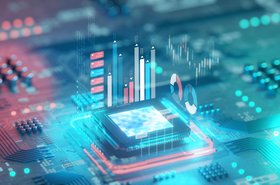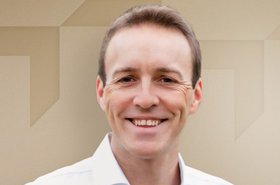Throughout history, the health of society has depended on communities. In a community, everyone has a role in working together and helping solve each other’s problems – each individual using their own strengths to support one another and supply what others don’t have.
With the data center market growing at such a pace today, it is becoming increasingly incumbent upon those running these facilities to assume an identity as an integral part of the community and not isolated entities cut off from the rest of society. This is especially the case as data centers take up more land space and use local resources like electricity and water.
The sheer growth of the industry shows this need, reflected by the expansion we are seeing in our six markets across Europe. In our home market of France, for instance, the data center industry is growing seven times faster than the rest of the economy, according to recent research by industry association France Datacenter.
Joining forces
Fortunately, players in the data center market are coming together to innovate and meet these community needs. Just one demonstration of this is the pan-European initiative the Net Zero Innovation Hub for Data Centers, launched last September in recognition of the need for a swift societal transition to a zero-carbon economy.
Formed by Danish multinational company Danfoss, along with Google, Microsoft, and Schneider Electric, and later joined by Data4, the initiative is exploring possibilities in areas such as heat reuse in the local community, clean power generation, and building-material decarbonization.
But while such moves are promising, we still have a lot more to do in the community both as individual organizations and in collaboration. And we must do it at an ever-faster pace given the accelerating demands being placed on data centers by generative AI and cloud services.
Exploring alternatives
As methods for activities like heat reuse face challenges like delivering heat over long distances, it is crucial to explore different environmental methods to meet needs. One possibility is the development of biocircular data centers, such as the use of captured CO2 to grow algae that can be recycled as biomass. That can then be harnessed locally in developing new sources of circular energy and making bioproducts for industries such as cosmetics and food.
This is a method that Data4 is exploring in collaboration with the University of Paris-Saclay, and we believe it would be possible to use it on our campuses by about 2030 if the proof-of-concept is successful. That’s an important year, given that by then countries are meant to achieve the United Nations Sustainable Development Goals.
Other methods, such as the use of brownfield sites for constructing data centers, are key for integrating into the community by using already developed land.
Meanwhile, to further communicate the sector’s environmental ambitions, it is important for data center providers to work in collaboration with industry associations that can provide a public face for the industry by promoting aims to public ministries and municipalities, as well as citizens. This is something we strive to do in the six countries where we currently have operations.
Economic boon
But environmental initiatives are far from the only positive impacts that data center providers can have on the local community. A benefit of the expanding industry is that the campuses being built contribute a significant amount to both employment prospects and the local economy. As well as often buying houses or apartments in the surrounding area to be close to work, employees lunch in local restaurants and shop in local shops in their free time when they come on-site each day.
In France, those working in the data centers industry also tend to have both more spending power than other sectors and greater job stability. France Datacenter’s figures show that some 94 percent of employees are on permanent contracts, against 86 percent across all industries, indicating even higher potential for long-term contribution to the economy.
Indeed, the country’s data center sector is estimated to have generated €3.4 billion in direct added value for the economy in 2023. Furthermore, data centers contribute to local development through the taxes they pay, as part of the revenue goes back to the municipality.
The impact will quickly become much greater as more campuses are added and expanded. At Data4, we currently have 800 employees coming into our two campuses of data centers in Paris each day, with a third being built and a goal of 2,000 full-time workers by the end of the decade.
We are also striving to use local suppliers to bring even more benefits to areas, as well as gaining the advantage that they have better knowledge of processes and conditions in the locality. Something we do to promote this is running a ‘speed-dating’ competition for start-ups in the area every year, selecting some to work with us.
In addition, Data4 participates in local life by organizing events such as music festivals and open-air cinema screenings, showing how it is striving to get more widely involved in society.
Demystifying the data center
However, one of the challenges at present is that the world of data centers often remains mysterious to the average person, as well as public institutions. Aside from finding innovative ways to give back, data center providers must therefore strive to forge a stronger identity in the local community by educating people in the local area on their role and thus demystifying what they do.
This is important because it can lead to the development of negative perceptions if people are unaware of what’s happening inside a data center, and why so many are being built and expanded. But from our experience, people’s feelings become positive when they understand better what we’re doing, and all the measures being taken to limit environmental impact and provide benefits to the local community.
As part of this, we at Data4 have developed links and partnerships with local schools and colleges. Our goal is for 100 students to receive training on each of our European campuses every year. At these half-day sessions, we explain what a data center is and its role, and how we support activities from cloud computing to social networking and entertainment.
We also explain to students how much their laptops and mobiles contribute to greenhouse gas emissions. This is an effective way to help them understand what their technology means for data center builds, and how extending the life cycle of their equipment can reduce environmental impact.
Creative attraction
The advantage of welcoming youths into the data center is not only better understanding from a young age of what these facilities do and how they contribute to society, but it can also later attract people with creative ideas into the industry.
This will be key as the market continues to balloon over the coming years, especially with more than half of data centers reporting difficulties in finding qualified candidates in a 2022 global survey by advisory organization the Uptime Institute.
Ultimately, as data centers and those that run them grow more visible, it is becoming essential for them to both give back to the community and ensure that people understand exactly what their role is in society. To do this, they must ensure they have a focus on taking continuous measures to identify as human-centric rather than technical, unfeeling businesses. Only in this way will they be viewed as stand-up pillars of their community.
More on Data4
-

Sponsored Revealing full data center environmental faces thanks to life cycle analysis
Analyzing the lifecycle of data centers “from cradle to grave” is crucial for pinpointing how the industry can minimize its environmental impacts
-

Sponsored Staying ahead in the AI race
As AI reshapes the European market, discover the challenges data centers face in scaling infrastructure and making smart, sustainable choices
-

Sponsored How innovative power sourcing can propel data centers toward sustainability
A proactive approach to securing sustainable power sources can position the industry as a leader in energy efficiency without compromising affordability

